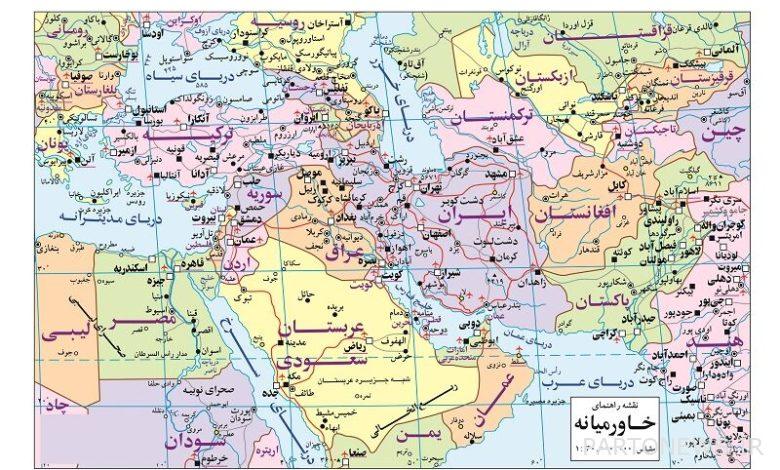2022 and the key and strategic challenges of the world

From the point of view of international affairs analysts, there are various issues that are a priority in 2022. Experts from the International Institute for Strategic Studies believe that overcoming the recession caused by the Corona epidemic will be a priority for all governments in the new year. In many areas, however, old-fashioned differences cast a shadow over the world’s strategic affairs.
The internal crisis is the reason for the weakening of America’s global capacity
A major challenge in North America is the US internal crisis, which threatens its capacity for global leadership. One year after the January 6 congressional uprising, the United States continues to face its main threat to democracy since the Civil War.
Although this is a crisis that stems from the political polarization of recent decades, it is now much more serious; Developments have created the conditions for rethinking America’s capacity to lead a unipolar international system and transform it into a bipolar or multipolar structure.
A major challenge in North America is the US internal crisis, which threatens its capacity for global leadership.
Shortly after January 6, 2021, Republican leaders seemed to want to oust the man who instigated the mob attack on Congress, but Trump remained popular with Republicans, and many party figures commented on Trump. They repeat the election theft. From now on, these lies will be used by the Republican houses in key states for the 2024 elections.
The corona and the vaccine issue, economic recovery and unemployment, and the sudden rise in inflation are all issues that are bothering the White House. At the same time, US President Joe Biden’s popularity has plummeted since last summer. 34 months before the 2024 presidential election, there is enough time to change the situation, but at the moment it is hard to imagine that the Democrats will be able to control the crisis.
The importance of reviving Burjam for the Middle East
With the start of 2022, all eyes are on the nuclear talks to revive the 2015 agreement between Iran and the major powers. The withdrawal of the Trump administration from Burjam in 2018 dealt a fatal blow to this agreement. In contrast, Iran played a reciprocal game with Joe Biden’s government by increasing the percentage of enrichment and increasing its enriched uranium reserves, as well as changing the type of cooperation with the International Atomic Energy Agency.
The region must come to terms with the fact that it may be too late and difficult to bring Burjam back to the main route; Issues such as Iran’s nuclear capability or a military confrontation between Iran and the United States or Israel obscure the region’s prospects. Meanwhile, Iran’s regional missile and drone activities are also important to Washington.
The issue of the Iran-US agreement is extremely important for the Middle East; If the regional powers pursue de-escalation in 2021, we can hope to resolve the conflicts in 2022.There are other stressful areas in the area. Despite the de-escalation in 2021, Libya’s political process is still fragile; There is no sign of a cessation of hostilities in Yemen, and although the Syrian conflict has stopped, it retains its geopolitical character. Iraq, on the other hand, is facing internal tensions and Lebanon is on the brink of crisis. The transfer of power in Sudan is also in jeopardy; Aside from internal problems, Turkey faces many rivals in the eastern Mediterranean, and Morocco and Algeria are going through their worst crisis in years.
The region is also witnessing the effects of the Taliban’s domination of Afghanistan. Only if the regional powers follow the 2021 decision to reduce tensions can the conflict be resolved in 2022.
Continuing Inequality and Poverty in Latin America
In Latin America, too, the highlights of the New Year are high levels of inequality and poverty, which undermine regional security.
2022 will be another challenging year for Latin America, despite continued economic growth and significant improvements in vaccine production. Economic growth is projected to decline to 3% in 2022; This level will not be enough to improve the region’s GDP to pre-epidemic levels in the medium term.
The unprecedented level of inequality and poverty, along with the weakening of the rule of law, continues to lead to more violence and uncontrollable migration, while strengthening the power and role of quasi-governmental criminal groups. This will have negative consequences for internal and regional security, as well as intergovernmental relations.
Latin America is also struggling with a lack of liquidity, investment and financing, and is therefore relying on China to meet its infrastructure needs. Economic realities are driving the geopolitical and geoeconomic orientation of the region towards Beijing. Biden’s diplomatic actions and strategies must focus on this issue.
New security defense concepts for Europe
In 2022, Europe’s most important challenges are epidemics and migration, which will be integrated into new contexts with new challenges. The EU, led by France, is developing a post-epidemic economic model, and a review of EU financial laws and financial capacity will be among the issues of concern. The European Commission is seeking a stronger but still integrated response to aspects of its systemic competition with China. The decision follows a strong reaction from China to the opening of the Taiwanese embassy in Lithuania last year.
As Germany, the last chairman of the G7, seeks to strengthen democratic flexibility, the rule of law in Hungary and possible elections in Poland will be challenged.
The President of the Council of Europe, Charles Michel, has proposed that 2022 be the “Year of European Defense”. To this end, a series of activities are being considered, including the adoption of the EU strategy in March and the definition of NATO’s new strategic concept in June. As Russian President Vladimir Putin explores options for Ukraine’s sovereignty and security, Europe needs to look at its own security structures.
Sudden instability can affect even a seemingly secure post-Soviet government like Kazakhstan.Multidimensional tensions for Russia and Eurasia
With the beginning of 2022, severe tensions in Russia-West relations continue. Russia has deployed more than 100,000 troops near the Ukrainian border to put pressure on the United States and NATO to reconsider European security and sign an agreement with Moscow. At worst, Russia’s re-invasion of Ukraine could lead to the worst conflict between classical armies in Europe since World War II.
In the Caucasus, tensions between Armenia and the Republic of Azerbaijan continue after the ceasefire in November 2020, which ended their second war. Central Asia will also face concerns about Afghanistan and the Taliban. Unprecedented unrest in Kazakhstan will also have far-reaching consequences. Russia’s intervention at the request of the Kazakh president may change the security order in the region in Moscow’s favor. These events also show that sudden instability can affect even a seemingly secure post-Soviet regime.
A crucial year for China and Ping
In the case of China, the key issues are strengthening the flexibility of the domestic economy and giving Xi Jinping more control over power.
China-US relations did not improve in 2021 and will remain the same next year … In any case, competition and reduced dependence on China’s supply chain in vital areas will remain key issues for both countries.2022 will be a politically significant year for China’s policies. The Chinese Communist Party will face long-standing internal and external challenges. Sino-US relations did not improve in 2021 and will remain so next year. It remains to be seen where trade relations between the two sides will move, but in any case, competition and the reduction of dependence on China’s supply chain in vital areas will remain key issues.
For Beijing, the bigger problem is how to create economic flexibility at home through the dual-circulation model. The country also faces growing restrictions on access to foreign technology and innovation. Slowing economic growth, socio-economic concerns, especially the issue of Corona, are important concerns for Beijing.
On the other hand, there is the challenge over Taiwan. Although military conflict seems unlikely, China continues to train and strengthen the People’s Liberation Army.
The holding of the 20th Congress of the Communist Party in late 2022 is also extremely important, as there is a possibility that Xi Jinping will be elected for a third term; Thus, political changes increase his dominance over the party and the country.
In other parts of the world, the previous challenges continue and even expand. Continuing and escalating armed conflict in sub-Saharan Africa is eroding democracy. War and insecurity affect several countries in West Africa and the coast, while there is a risk of further spread to other countries.
For South Asia, managing bilateral relations is a priority for the region’s capitals. Countering the spread of extremist ideology and terrorism in Afghanistan, managing the escalation of bilateral tensions between Afghanistan, Pakistan, India and China, and reducing the economic impact of the third wave of Quaid-19 will be key challenges for South Asia.
.

